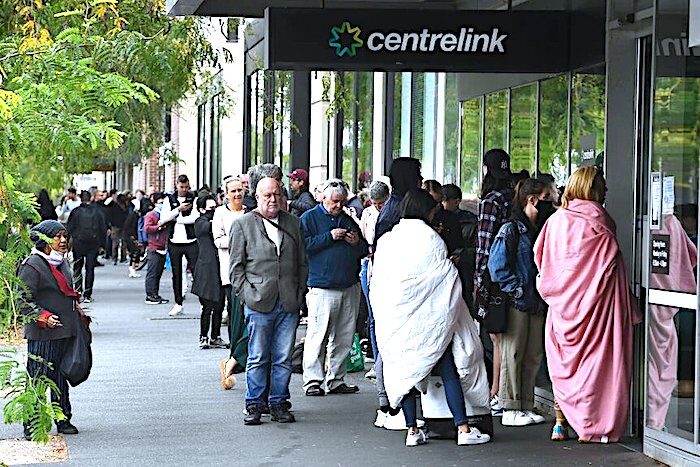
Who controls the levers?
In this era of coronavirus lockdowns, we've learned a lot about our economic policy settings. For example, we've learned widespread poverty is a policy choice in Australia. Governments have the power to lift hundreds of thousands of households out of poverty if they want to.
The federal government did it last year, when it increased unemployment payments during the initial lockdowns. That situation lasted a few months. But then it let those families fall back into poverty by taking those special payments away again, as the graph below shows.
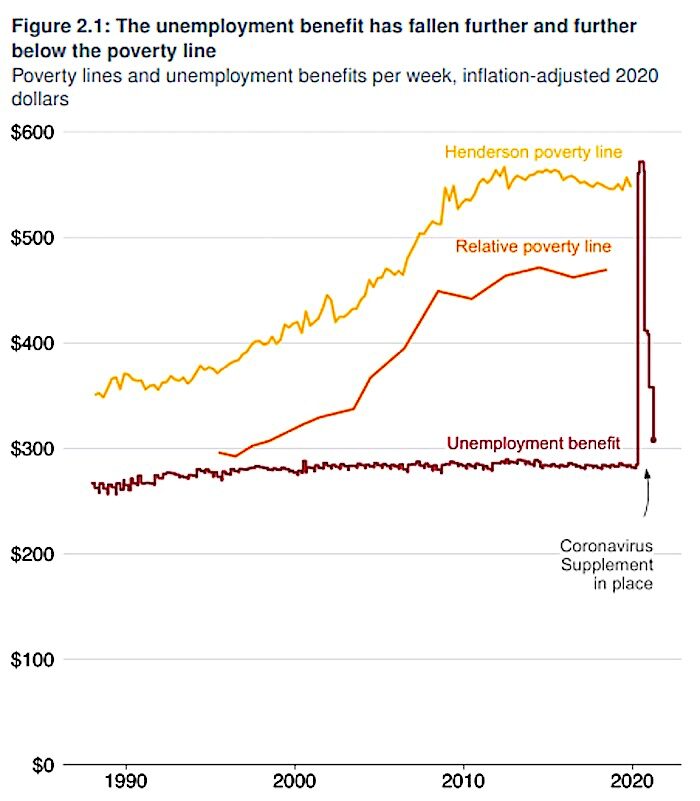
In recent decades, it's been a policy choice in this country to have a national unemployment rate of somewhere between 4 and 5 per cent — no lower. That's because, since the 1980s, econocrats have asserted there's a level of unemployment that's "natural" for prevailing conditions. They've called that natural level of unemployment the "NAIRU" — the non-accelerating inflation rate of unemployment.
According to their theory, if the unemployment rate is allowed to fall too far below that "natural" level, wages and inflation will start growing too quickly. So they've been using interest rates as a policy lever to try to keep the unemployment rate on that natural level, or slightly above it.
How have they done that?
Well, if the unemployment rate starts declining, and their model's telling them it's very close to, or has fallen below, the presumed "natural" level, they'll lift interest rates to "take some heat out" of the economy. That's a euphemism for pushing the unemployment rate higher, or slowing the economy down. It's often the same thing.
But there's been a real-world cost to that policy.
By preventing the unemployment rate from falling below its presumed "natural" level, they've been using hundreds of thousands of unemployed Australians as shock absorbers. Those unemployed people have been assigned to Team Inflation Control without their knowledge. And for their patriotism, they've been ridiculed for being unemployed.
At the same time, successive governments have tightened the screws on unemployment benefits to "incentivise" those unemployed people to look for jobs in an economy where there haven't been enough jobs to go around by design.
To top it off, in the last two decades they've also been importing hundreds of thousands of workers from overseas, which has helped to suppress wages and weaken workers' bargaining power, as the Reserve Bank governor explained recently.
So how correct have they been, about that "natural" level of unemployment?
Unfortunately, in the last six months, Treasury and RBA officials have publicly admitted they've been miscalculating the level of that "natural" rate for years. Apparently, it was probably lower than they thought.
What does that mean?
It means the economy could have handled a lower unemployment rate without inflation or wages picking up, so the economy was further away from its potential than they suspected, according to their own model. And that means policymakers could have been working harder to drive the unemployment rate down. Sorry about that.
Here's the next thing
But let's go a step further. Because it gets worse. This policy framework has never been accepted by economists across the board. There are plenty who criticise the reigning model. They say it makes little difference if Treasury and RBA officials now admit their model has been slightly wrong because they're just tinkering around the edges of a model that should be thoroughly overhauled, or abandoned altogether. And here's one reason why:
Australia's policymakers have been spending a lot of brainpower since the 1980s trying to calculate the difference between the actual unemployment rate and the supposed "natural" unemployment rate.
They call the difference between the two the "unemployment gap."
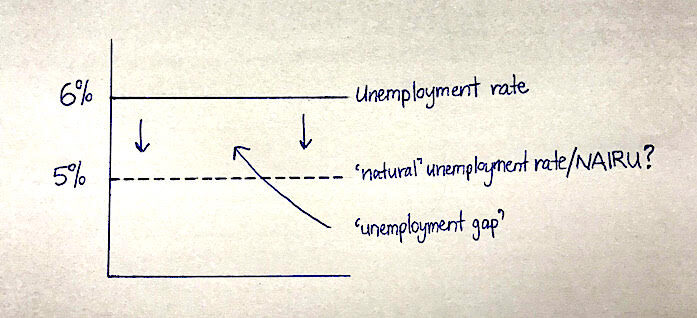
See any problem here?
If you rely on an unobservable "unemployment gap" to forecast wage growth, it might lead you to publish wage and inflation forecasts that are repeatedly wrong (as the RBA has been doing for years, see below).
Unfortunately, those forecasts are used as part of setting interest rates and Treasury's similarly incorrect forecasts feed into the federal government's budget numbers.
It's the same thing with the economy
Now let's go one final step. Here's the thing I really wanted to talk to you about.
The supposed "natural" rate of unemployment and the "unemployment gap" (remember: both unobservable) are elements of a larger analytical framework that has similar problems.
Let me explain.
Since the birth of economics as a social science hundreds of years ago, economists have been obsessed with trying to figure out where economic growth comes from. In its earliest texts, you can see them talking about how growth seems to come from three things — land, labour, and capital — when you use them a particular way. But as economics evolved as a discipline, you can see them getting more sophisticated. They start to wonder what an economy's "potential" output could be.
Introducing the 'output gap'
And here's what they mean:
Let's say you know what your economy is currently producing. What's the highest level of output your economy could potentially produce without creating destabilising inflation?
If you think your economy's level of output could be higher (because inflation's too low), or should be lower (because inflation's too high), that means there's a difference between its actual level of output and its potential output.
They call that difference the "output gap".
But if there's an output gap, it leaves us with this question: How do you get the actual level of output to get back to its potential level?
Thankfully, you now know how to visualise that problem. It's similar to the way you visualised the relationship between the unemployment rate and the presumed "natural" unemployment rate. If you believe the economy is performing below its potential, you cut interest rates (or boost spending) to stimulate economic activity. If you think it's performing above its potential, you lift interest rates (or cut spending) to dampen activity.
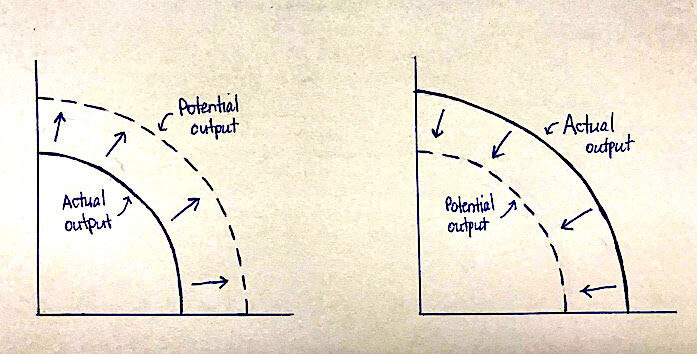
Well, according to the theory that's been dominant since the 1980s, the potential growth rate is determined exclusively by "supply" sources.
And Australia's econocrats put it this way. They say the potential growth rate is determined by three things: population, participation, and productivity. They snazz it up by calling it the "Three Ps." According to their framework, the potential growth rate will increase if the population grows faster, or if more people start participating in the labour force, or if the productivity rate increases.
But the Three Ps theory is just that — a theory.
There are plenty of economists who criticise it, who say it neglects the role "demand" plays in an economy's potential growth.
For instance, if you have an economy with a deliberately high level of unemployment, with workers with little bargaining power, where wage growth is anaemic, millions of households have little disposable income and wealth inequality is increasing, wouldn't you think demand might be weaker than it otherwise would be if millions of workers were in a better financial situation?
They say structural weaknesses in demand can become self-perpetuating, permanently reducing the rate of potential growth over time.
Anyway, I'll leave you with an excerpt from this year's federal budget.
Hopefully you'll see how econocrats have been talking over your head all these years. Notice how they're explaining how the numbers in the budget were conjured, and how they simply assume that the "output gap" and the "unemployment gap" will both shrink to nothing, over the horizon, as the economy grows.
It's an assumption they've been making for years. It's their theory about unobservables disappearing, or something:
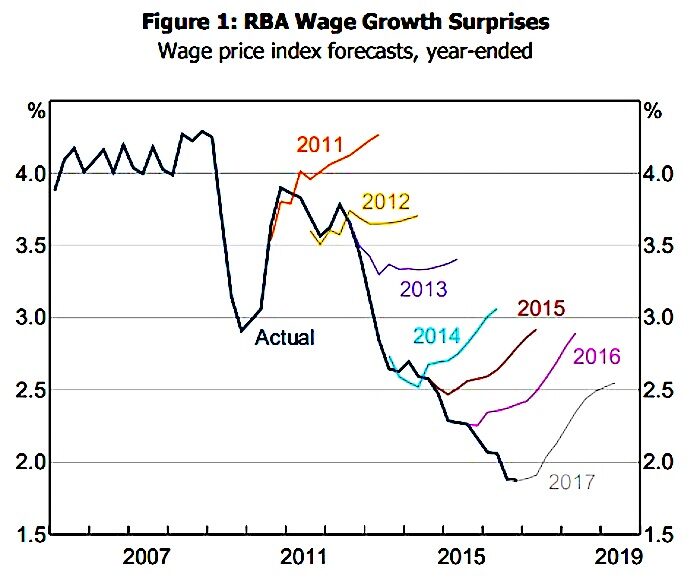
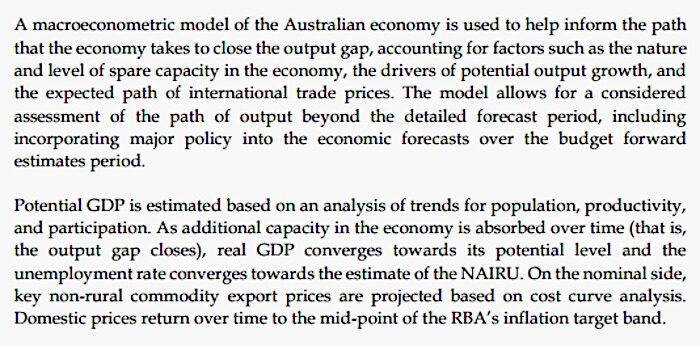



Those who are collecting
Those who have collected, and fell off the system counts.